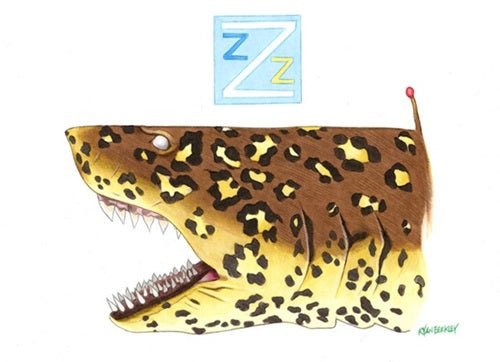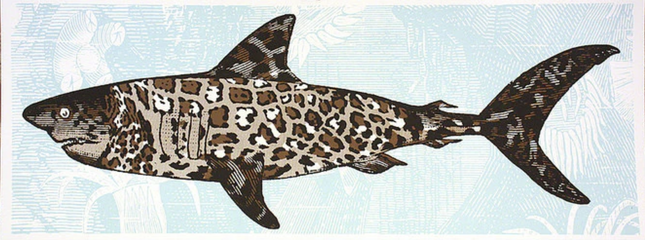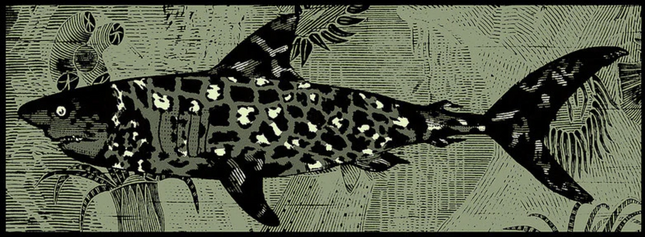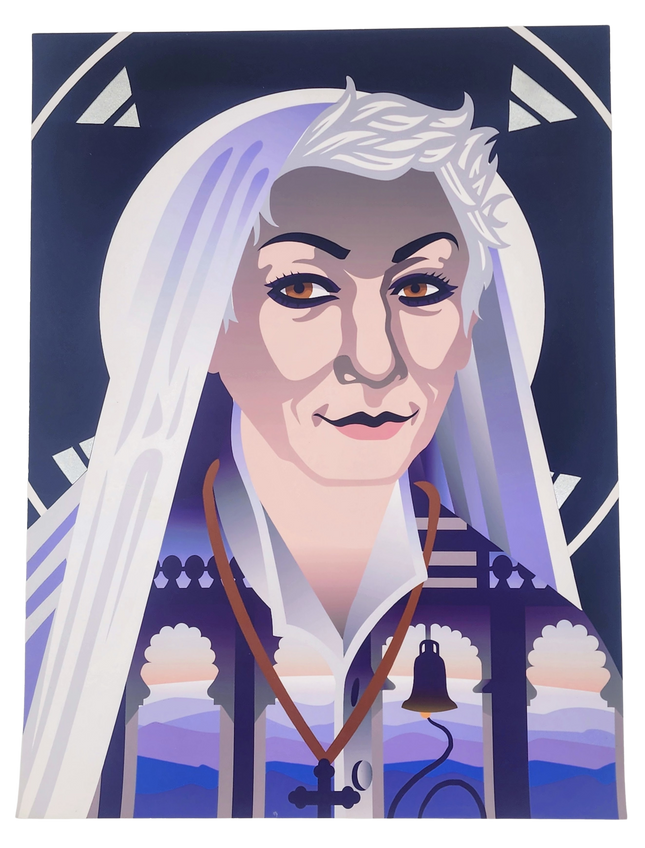
Wes Anderson

Ryan Berkley Jaguar Shark Giclee Print by Ryan Berkley
Jaguar Shark Artwork Giclee Limited Edition Print on Fine Art Paper by Pop Culture Graffiti Artist Ryan Berkley. Ryan Berkley - "Jaguar Shark" limited edition fine art digital print signed and numbered edition of 50 copies 8" x 10"
$99.00


Nate Duval Jaguar Shark Glow GID Silkscreen Print by Nate Duval
Jaguar Shark Glow GID Hand-Pulled 4-Color Silkscreen Print on Fine Art Paper by Pop Artist Nate Duval Limited Edition Artwork. 2012 Signed & Numbered Limited Edition of 100 Artwork Size 24x9 2 Glow In The Dark Inks
$99.00

Kevin Stanton Patricia Silver Hand Cut HPM Giclee Print by Kevin Stanton
Patricia Silver Hand Cut HPM Spray Paint Giclee Print by Kevin Stanton Artwork Limited Edition Print on Layered Glitter Fine Art Paper Hand Embellished Print Graffiti Pop Street Artist. 2013 Signed & Numbered Spray Paint Glitter Paper Hand Cut Embellished Limited Edition of 4 Artwork Size 11.75x15.75 HPM Giclee Print. Silver Paper Collage of a Woman Anjelica Huston Stylized from the Movie The Darjeeling Limited. Kevin Stanton's "Patricia Silver": A Tribute in Hand-Cut Precision The artwork "Patricia Silver" by Kevin Stanton is a limited edition print that showcases the artist's deft hand at combining traditional cut-paper artistry with modern techniques like spray painting, creating pieces firmly rooted in Street Pop Art and Graffiti Artwork. The 2013 piece, signed and numbered, is a rare collection with only four editions, each sized at 11.75x15.75 inches and meticulously crafted on layered glitter fine art paper. This hand-embellished HPM (hand-painted multiple) Giclee print presents a silver paper collage of a woman, offering a stylized depiction inspired by Anjelica Huston's character from Wes Anderson's film "The Darjeeling Limited." Artistic Fusion: Street Aesthetics and Cinematic Influence Stanton's work in "Patricia Silver" captures the essence of character and narrative through the interplay of light, shadow, and texture. The piece resonates with the ethos of street art, where everyday visuals are transformed into striking, memorable icons. The likeness to Anjelica Huston is symbolic and evocative of the character's depth, mirroring how street art often encapsulates complex stories within simple yet powerful imagery. The choice of silver paper invokes a sense of the ethereal, contrasting with the bold solidity of spray paint—two mediums that evoke the duality often found in street art between the fleeting and the permanent. Stanton's meticulous hand-cutting technique further adds a layer of complexity, demonstrating the same care and attention to detail that street artists apply to their large-scale murals. Celebrating Character: An Intersection of Art Forms The confluence of street art sensibilities and cinematic inspiration in "Patricia Silver" represents a broader trend in contemporary art where cross-medium influences are increasingly prevalent. Stanton's translation of a film character into a hand-cut artwork speaks to the permeability of artistic disciplines. It celebrates character and personality, much like graffiti artwork, often as an homage or a socio-political statement within the public space. In this artwork, the character of Patricia from "The Darjeeling Limited" is not just commemorated but reimagined through Stanton's unique artistic lens. The depiction is a testament to the artist's ability to distill the essence of a subject into a visual form that is both accessible and profound, similar to how iconic figures are rendered in pop culture murals and street art installations. Kevin Stanton: A Contemporary Visionary of Cut-Paper Art Kevin Stanton stands as a visionary in the modern art world, where traditional techniques are revived through a contemporary lens. "Patricia Silver" is a testament to his innovative approach to art-making, where the old and the new are seamlessly woven into a singular, cohesive narrative. His limited edition prints are not just artworks; they are stories told through paper and paint, meant to engage and resonate with an audience as powerfully as any street-side masterpiece. "Patricia Silver" remains an integral part of Stanton's artistic journey, exemplifying his dedication to craft and ability to communicate visually. In the same way that street art has evolved to become a respected and critical part of the art dialogue, Stanton's work continues to challenge and redefine what is possible within the traditional scope of cut-paper artistry, bridging it with the vibrant spirit of Street Pop Art and Graffiti Artwork.
$175.00





